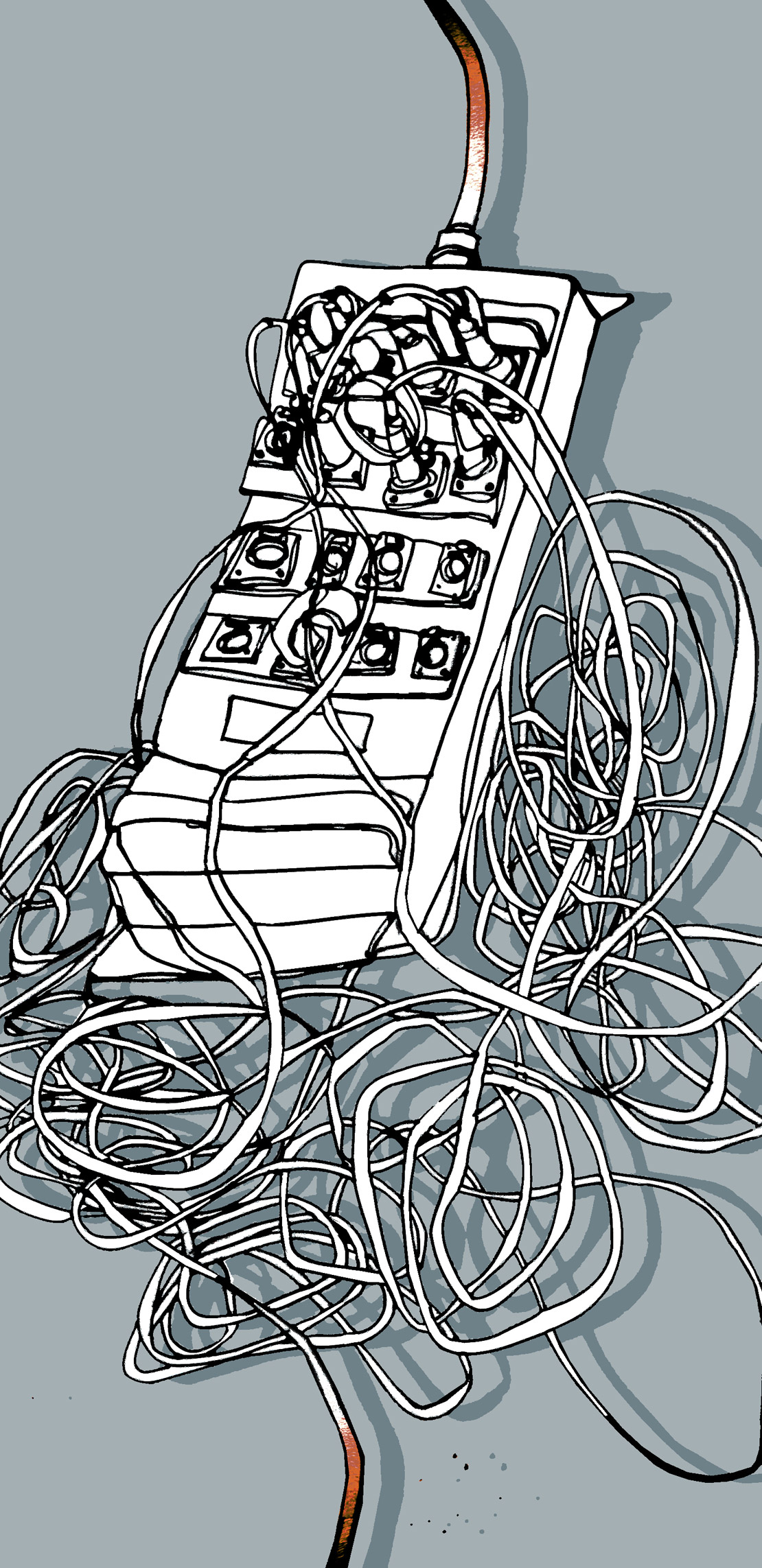I've been using analog synthesizer filters to process audio ever since I bought a PAiA modular synth in the mid '80s, and you'll get no argument from me if you were to say the venerable Moog filter is one of the best sounding filters ever made. So when Moog introduced The Ladder, a 500-series version of their classic filter, I was more than eager to check it out. When a pair of these showed up, we installed them into slots 23 and 24 of our API 1608 console (Tape Op #81). Finally, something I'd always dreamed of, a pair of filters inside the console!
I wasn't in the studio much the first few months The Ladders were in the console, but I started getting some good feedback from the other engineers working in the studio, which only made me more eager to check them out myself. Now let it be said, I'd be pretty happy to just have a pair of Moog low-pass filters with the cutoff and resonance controls in front of me in the console. To be able to manually sweep a pair of filters while tweaking the resonance from the mix position would be pretty amazing in my book. But Moog has given us much more than that. Firstly, you can switch between low-pass or high-pass mode on the filter, as well as switch between a 4-pole filter slope, more like the classic Moog filter, or a smoother and mellower 2-pole slope. There is also an input Drive control as well as output level so you can use the filter to add a bit of transistor-based harmonic distortion to your signal. But the really cool tweak to The Ladder is the envelope follower circuit. With attack and release controls and an Amount control that lets you add positive or negative amounts of the envelope follower's control voltages to the filter's cutoff frequency, the possibilities are endless! Depending on which mode you are in and whether the CV is negative or positive, you can add dynamic filter effects to your signal with tons of control, with the ability to tweak just the right amount of effect.
I finally got a chance to fool around with The Ladder on a mix I was working on, using the filter on the mono drums, which were recorded by Liam Watson at Toe Rag (Tape Op #15, #88). There were so many cool options to be had - from closing down extra cymbal noise after the drums were hit, to creating Simmons-like electronic drum sounds with the resonance opened up when the kick and snare hit. But in the end, the drums sounded just fine the way Liam recorded them, so I left them alone - after getting a glimpse at just how deep The Ladder is. But on the same song, we had a muted 1/8th-note distorted guitar part that was too bright and distorted, and I couldn't get it to sit right in the track. No prob. I just ran it through The Ladder and got the envelope just right so that the filter closed down pretty quickly after each initial attack, mellowing out the track until it fit perfectly in the mix. Problem solved. This thing can solve tons of problems, or create problems of the more interesting sort, depending on your mood and attitude.
Complaints? Well, factoring in that these are in the inherently-compromised 500-series format, only one really: I wish the 2/4-pole switch was where the bypass switch was. When manually sweeping the filters down to 0 Hz (something that is so much fun to do!), it's way too easy to hit that switch and inadvertently switch from 4-pole (my go-to setting - c'mon, it's a Moog filter, dammit!) to 2-pole. I've also heard some people grumbling about the lack of CV inputs and outputs on this, and that it won't interface with Eurorack modules. C'mon, people, you're missing the point. This is not meant to be part of a modular synth setup; there are plenty of modular filters out there in that format! How many filters on the other hand offer balanced I/O at line-level? Not many - and none that fit in my console or 500-series rack anyway. If you need CV, you
probably need a more complex modular synth setup anyway. I'll admit that when we first got The Ladders, I fleetingly thought, "What, no LFO for the cutoff?" But how useful is an un-synced LFO anyway? I recently tracked two songs where I used a MIDI to CV converter to sync an LFO controlling a bank of analog filters to the tempo of the track for some amazing effects using triangle and square waves on the LFO, but that's a complex patch beyond the scope of a filter in a console.
Bottom line is, The Ladder is an elegant solution - and then some - for the tasks I used to drag out my synths and struggle to interface them to the console with all the issues related to mismatched levels and impedances. Suffice it to say, I will not be returning these to the manufacturer!
($849 MSRP; www.moogmusic.com) -JB, www.thehangarstudios.net




_disp_horizontal_bw.jpg)